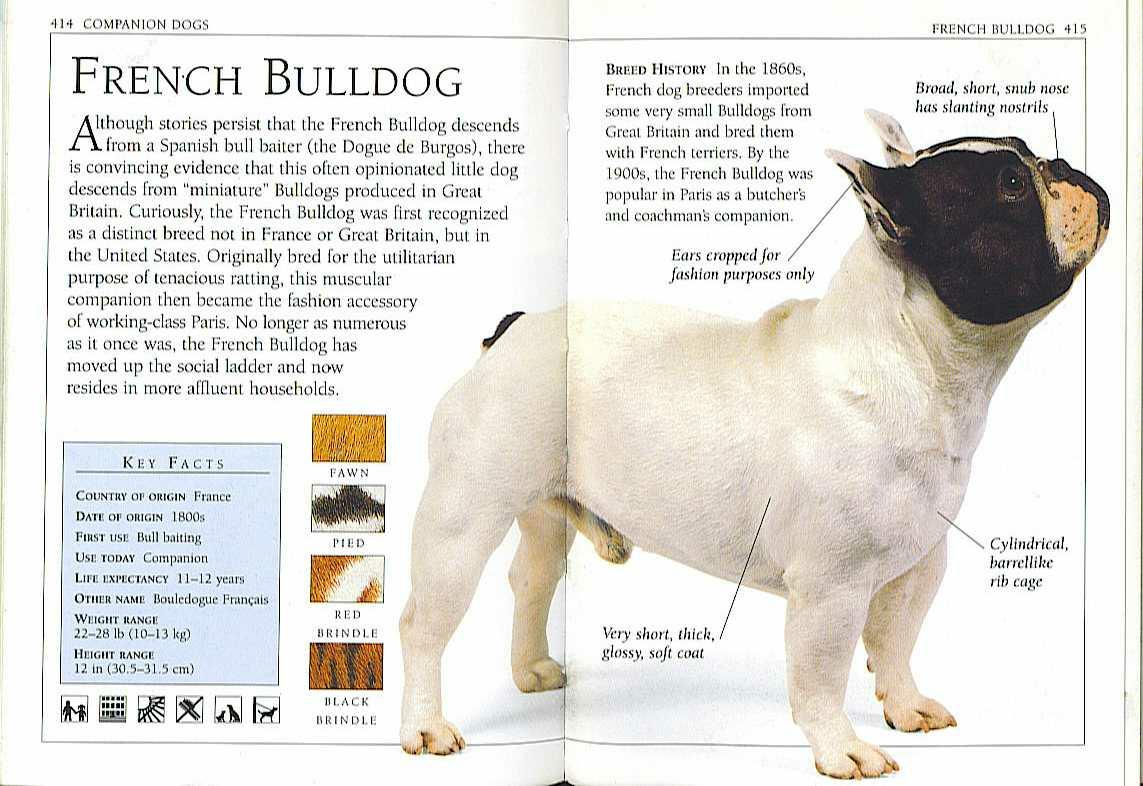|
While theories abound about the the exact origin of the
French Bulldog, the most prevalent opinion is that
around the mid 1800's Normandy lace workers from England
took smaller bulldogs with them when they sought work in
France. In the farming communities north of France that
the lace workers settled in, the little Bulldogs became
very popular as ratters and loyal family companions and
their population began to swell. These little bulldogs
were in fact "culls" of the established Bulldog Breeders
in England, who were generally more than happy to sell
these undersized examples of their breed to fanciers of
the "new" breed in England. This was especially true of
the "tulip" eared puppies that cropped up at times in
Bulldog litters. As the new, smaller Bulldogs gained
popularity in France, they became favorites of the
Parisian "Belles De Nuit" - the street walkers. Breed
historians can still sometimes turn up notorious "French
Postcards" bearing images of scantily clad French
prostitutes posing with their little "Bouledogues
Francais." The aura of notoriety that ownership of the
little dogs conveyed soon made them a fashionable way
for the well to do classes to show off how daring they
could be, and they soon became favorites of the
"artistic" set across Europe. Photos dating to around
this time show photos of the Russian Royal family posing
along side their French Bulldogs, and they were said to
have imported several of the little dogs from France.
It is inarguable that without the influence of
dedicated, turn of the century American fanciers the
breed would not be what it is today. It is they that
organized the very first French Bulldog Club in the
world, and it was they who insisted that the "bat" ear
so associated with the breed today was correct. Until
that time, French Bulldogs were shown with either the
"bat" or "rose" ear. As a point of historic interest, a
French Bulldog, insured for the at that time
astronomical sum of $750, was on board the ill fated
Titanic. All in all, French Bulldogs truly are an
International Breed, with fanciers of many nations being
responsible for the creation of the loving dogs we know
today.

|